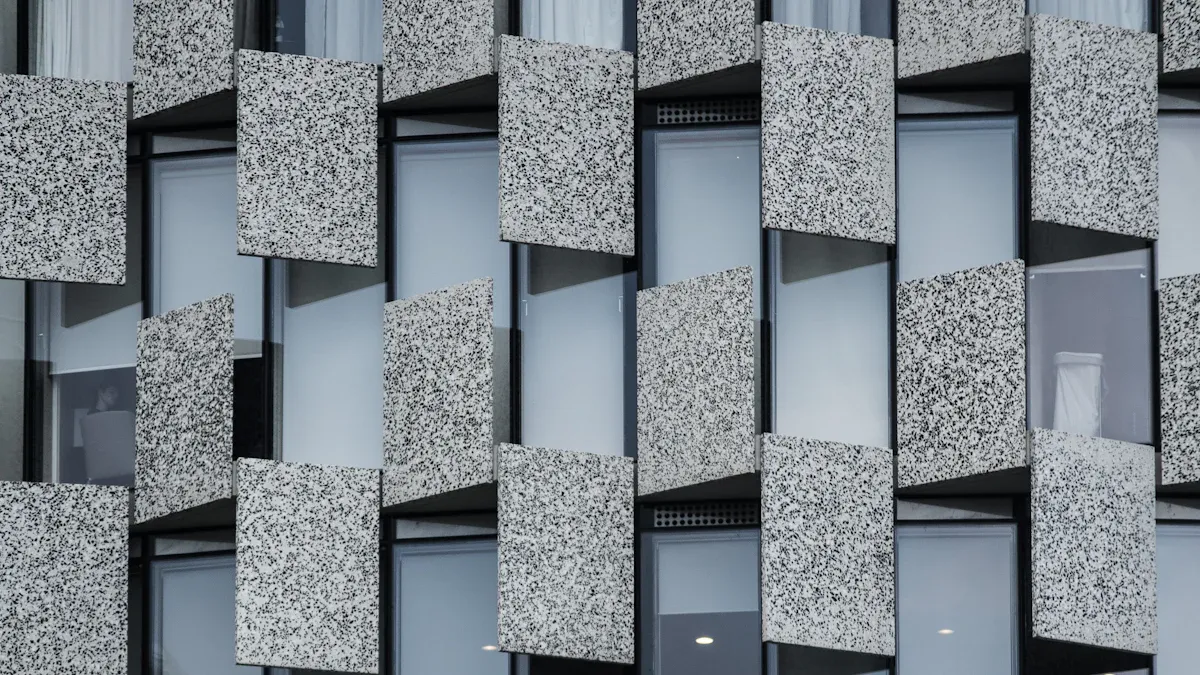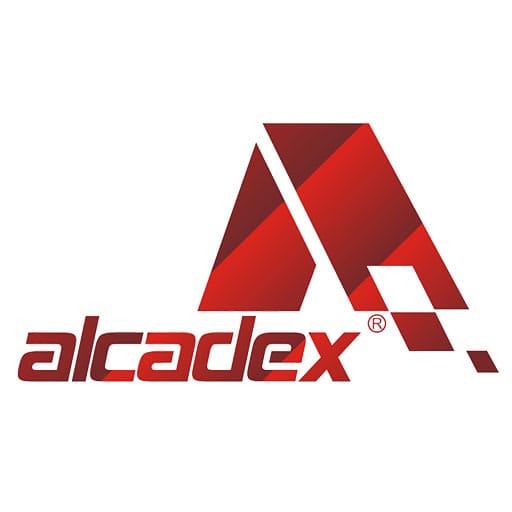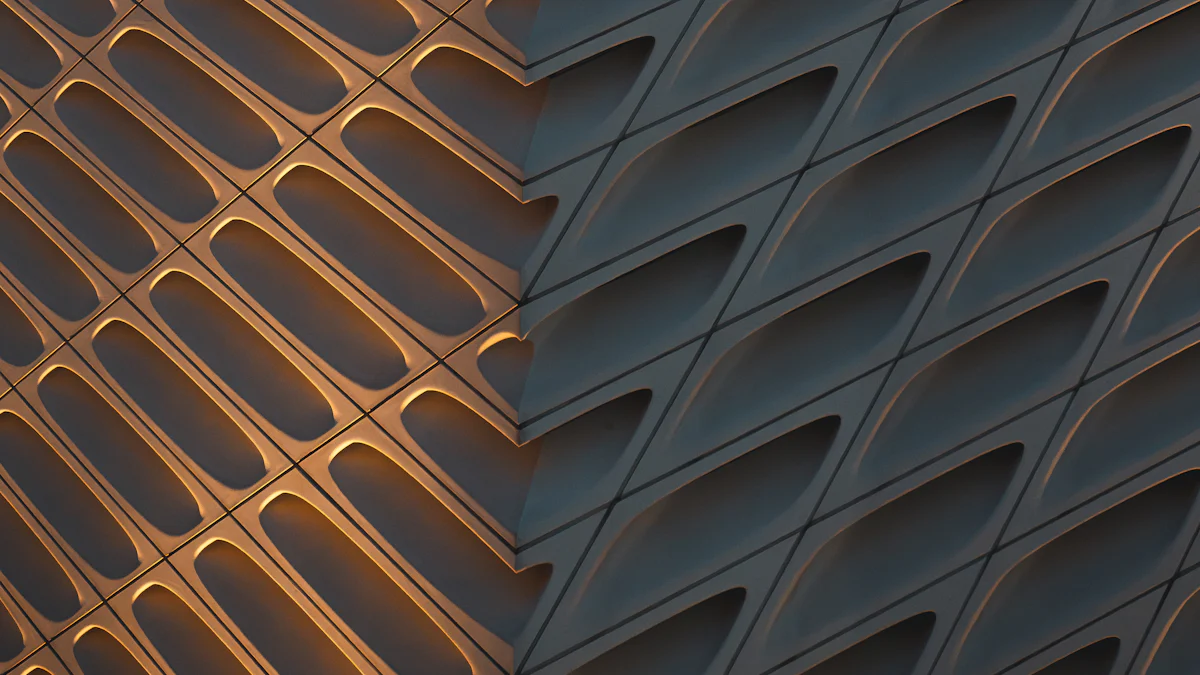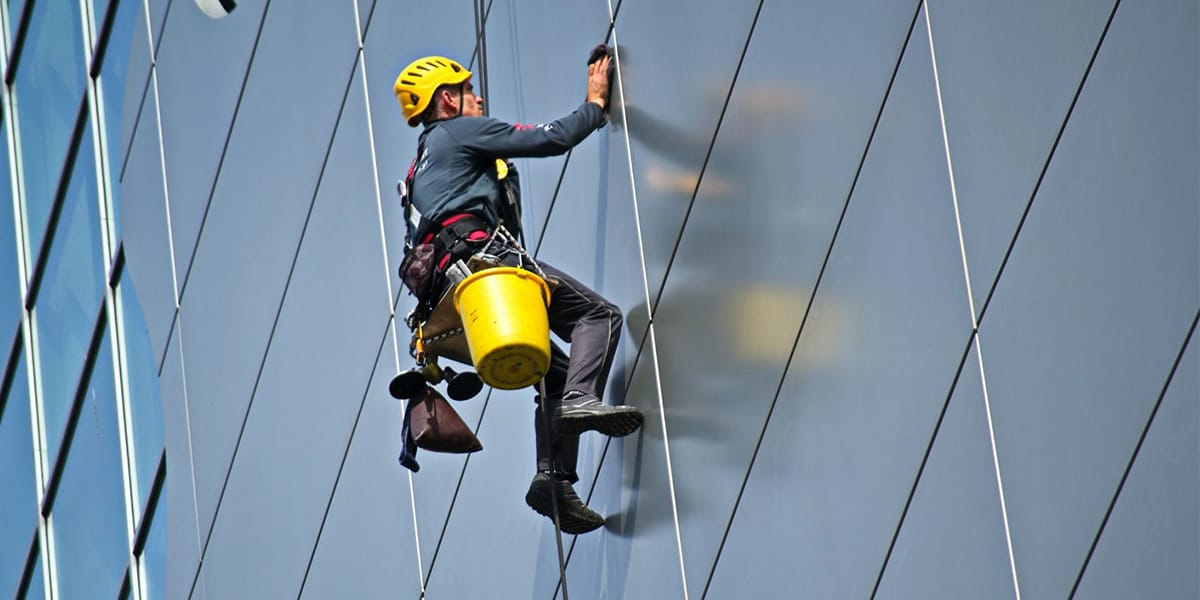
09 Sep The Ultimate Guide to ACP Cladding for Architects and Builders
Table of Contents
You see acp cladding on many modern buildings today. This material uses layers of aluminum and a core to create strong, lightweight panels. You can use acp to protect walls and add style to any structure. Many architects choose cladding because it lasts long and looks great. You will find practical details and technical tips in this guide to help you make smart choices.
Key Takeaways
ACP cladding is strong and lasts a long time. It protects buildings from rain, wind, and sunlight.
Pick the right thickness for ACP panels. The building’s height matters for safety. Thick panels help keep buildings safe from strong winds.
ACP cladding comes in many colors and finishes. You can make creative designs with it. It helps buildings look better.
ACP cladding helps save energy. It can lower heating and cooling costs. This is good for the environment.
Clean ACP cladding often and check for damage. This keeps it working well and looking nice for a long time.
ACP Cladding Overview
What Is ACP Cladding?
You see acp cladding on lots of buildings now. This system uses aluminium composite panels to cover walls and other surfaces. You can use acp cladding to keep a building safe from rain, wind, and sunlight. Many architects pick aluminium composite material cladding because it looks new and lasts for years.
Aluminum composite panels have two thin aluminum sheets with a core in the middle. This makes a strong and light panel that is simple to put up. ACP cladding gives you many choices for color and texture. You can make bright designs or plain finishes. Many builders use acp cladding for offices, schools, and shopping malls.
Tip: You can use aluminium composite material cladding for new buildings or when fixing old ones. This makes it a good choice for many jobs.
Here are some reasons to pick acp cladding:
You want a material that stands up to weather and damage.
You need panels that are easy to cut and shape.
You like a neat and stylish look for your building.
You want to save time when putting it up.
Aluminum Composite Panel Structure
You should know how an aluminium composite panel works before you choose it. Each panel has three main layers:
Layer | Material | Purpose |
|---|---|---|
Top Sheet | Aluminum | Protects and decorates |
Core | Polyethylene or Fire-retardant | Adds strength and insulation |
Bottom Sheet | Aluminum | Supports and stabilizes |
Aluminium composite panels use strong glue to hold these layers together. You get a panel that stays flat and does not bend. The core can be made from different things. Some panels use fire-retardant cores for extra safety. You should check the core type before you buy aluminium composite material cladding.
You can find aluminium composite panels in many thicknesses. Thicker panels are better for tall buildings. You should ask your supplier about the right thickness for your job. Many aluminium composite panel choices have special finishes. You can pick shiny, dull, or rough surfaces.
You can use aluminium composite material cladding for outside walls, inside walls, and even signs.
You get panels that are simple to clean and take care of.
You can swap out broken panels without taking down the whole system.
Note: Always check the quality rules for aluminium composite panels. Good panels last longer and keep your building safe.
ACP Cladding Benefits
 Durability and Weather Resistance
Durability and Weather Resistance
You want your building to last a long time. ACP cladding protects walls from rain and wind. It also keeps out strong sunlight. The aluminum composite panel does not rust. It does not crack easily. You can use ACP cladding in places with tough weather. Many architects pick aluminium composite panelling for tall buildings. It stands up to strong winds.
You see ACP cladding on schools and hospitals. Shopping centers use these panels too. The panels keep water and dust away from walls. You do not need to worry about paint peeling. Colors do not fade. The surface of aluminium composite panelling stays bright. It looks clean for years. You can clean the panels with water. Use a soft cloth to wipe them.
Tip: If your city gets heavy rain or strong sun, ACP cladding helps protect your building. You save money on repairs. You spend less on maintenance.
Examples of ACP cladding meeting modern standards:
Office towers in coastal cities use ACP cladding to stop salt damage.
Airports use aluminium composite panelling to keep walls safe from wind and rain.
Schools use ACP panels to protect walls from scratches and dents.
Aesthetic Versatility
You want your building to look nice and modern. ACP cladding gives you many choices for color and texture. You can pick bright colors or soft tones. You can use aluminium composite panelling to make patterns. You can also make smooth surfaces. Many architects use ACP to design special facades.
You can mix different panels to make your building stand out. Some panels look like wood. Others look like stone. You can use ACP cladding for inside walls. You can use it for outside walls too. You can change old buildings with new ACP panels.
Table: Popular ACP Cladding Finishes
Finish Type | Appearance | Common Use |
|---|---|---|
Glossy | Shiny and bright | Shopping malls, offices |
Matte | Soft and smooth | Schools, hospitals |
Textured | Rough or patterned | Hotels, homes |
Metallic | Silver or gold | Airports, showrooms |
Note: You can ask your supplier for custom colors. You can get special finishes too. ACP cladding helps you match your building to your brand or style.
Energy Efficiency
You want to save energy and spend less money. ACP cladding helps keep your building cool in summer. It keeps your building warm in winter. The core of aluminium composite panelling acts as insulation. You use less air conditioning. You use less heating. This saves you money. It helps the environment too.
ACP panels reflect sunlight. They stop heat from getting inside. You can use ACP cladding to improve energy ratings. Many green buildings use aluminium composite panelling. It gives better insulation.
Benefits of ACP cladding for energy efficiency:
You lose less heat in winter.
You keep rooms cooler in summer.
You pay less for energy bills.
You help protect the planet.
Callout: If you want a building that uses less energy, choose ACP cladding with a fire-retardant or insulated core.
You see ACP cladding on eco-friendly schools and offices. These panels help meet green building standards. You can use ACP to make your building more comfortable and efficient.
Applications of Aluminum Composite Panels

Exterior Cladding
You see acp cladding on many modern buildings. You can use acp for exterior walls to protect your structure from rain, wind, and sunlight. Exterior cladding gives your building a fresh look and helps it last longer. You can choose panels in many colors and finishes. Some panels look like stone or wood. You can match the style of your building or create a new design. Exterior cladding also helps keep your building cool in summer and warm in winter. You save money on energy bills. Many architects use acp cladding for office towers, schools, and shopping centers. You get strong panels that do not rust or crack. You can clean them easily with water and a soft cloth.
Tip: You can use exterior cladding for both new buildings and renovations. This makes acp panel applications flexible for many projects.
Interior Uses
You can use acp inside your building too. Many people choose acp cladding for lobbies, hallways, and ceilings. You get smooth surfaces that look modern and clean. You can pick panels with bright colors or soft tones. Some panels have special textures. You can use acp to cover columns or create feature walls. Interior cladding helps protect walls from scratches and stains. You can clean the panels quickly. You do not need to paint them often. You can change the look of your space without much work.
Table: Common Interior ACP Panel Applications
Area | Benefit |
|---|---|
Lobby | Modern look |
Hallway | Easy cleaning |
Ceiling | Smooth finish |
Columns | Extra protection |
Signage
You can use acp panels for signs outside and inside your building. Many shops and offices use acp cladding for their signs. You get panels that are light and easy to shape. You can print logos and letters on the panels. ACP signs last a long time and do not fade in sunlight. You can use them for big signs on the exterior of your building or small signs inside. ACP panel applications for signage help you show your brand clearly. You can change signs easily if you need a new look.
Note: Applications of aluminum composite panels include building cladding, interior decoration, and signage. You get strong, stylish, and flexible panels for many uses.
Choosing ACP Cladding
Panel Thickness and Building Height
You need to choose the right thickness for your acp cladding. The height of your building matters. Taller buildings face stronger winds. Thicker panels give more strength. For low-rise buildings, you can use panels that are 3mm or 4mm thick. High-rise buildings often need 4mm or 6mm panels. You should ask your supplier about wind load calculations. These numbers help you pick the safest option.
Tip: Always check local building codes before you decide on panel thickness. Safety comes first.
A simple table can help you see the best choices:
Building Height | Recommended Panel Thickness |
|---|---|
Up to 10 meters | 3mm |
10-30 meters | 4mm |
Above 30 meters | 6mm |
Core Materials and Finishes
You have options when you pick the core for your acp panels. Some panels use a polyethylene core. Others use a fire-retardant core. Fire-retardant cores give more safety, especially for tall buildings or public spaces. You should always check what your project needs.
Finishes change how your cladding looks and works. You can choose glossy, matte, or textured finishes. Some finishes resist scratches or fading. You can match the finish to your building’s style or brand.
Polyethylene core: Good for small projects.
Fire-retardant core: Best for safety.
Special finishes: Help your building stand out.
Quality Standards
You want your acp cladding to last. Always look for panels that meet quality standards. Good panels pass tests for strength, weather resistance, and fire safety. Ask your supplier for certificates. These show the panels meet national or international standards.
Note: High-quality cladding keeps your building safe and looking new for years.
You should check for warranties. Reliable suppliers offer guarantees on their acp panels. This gives you peace of mind.
ACP Installation and Maintenance
 Preparation Steps
Preparation Steps
You must get your site ready before you start with acp cladding. First, look at the building’s surface. Make sure it is dry and clean. Take off any dust, oil, or old paint. Measure the area for the panels. Mark where you will put brackets and supports. Use strong frames to hold the panels in place. Good prep work stops problems later. Check what wind load your building needs. Tall buildings need extra support. Ask your supplier for help with wind load numbers. This keeps your cladding safe and strong.
Tip: Always wear safety gear when working with acp cladding. Gloves and goggles keep you safe from sharp edges.
Installation Best Practices
You want your acp cladding to last a long time. Pick the right way to install for your project. Use screws and brackets that fit your panels. Attach the panels tightly but do not bend them. Leave small spaces between panels for movement. This helps with hot and cold weather. Seal the joints with waterproof tape or sealant. Look at each panel for damage before you put it up. Follow the maker’s steps for how to install. Use trained workers for the job. Good training gives better results.
Table: Common ACP Installation Mistakes and Solutions
Mistake | Solution |
|---|---|
Loose panels | Use stronger brackets |
Bent panels | Handle panels with care |
Poor sealing | Apply waterproof sealant |
Wrong spacing | Leave expansion gaps |
Note: Good installation keeps your acp cladding safe in storms and strong winds.
Maintenance Tips
You should take care of your acp cladding often. Clean the panels with mild soap and water. Use a soft cloth or sponge to wipe them. Do not use harsh cleaners that can hurt the surface. Check the joints and seals once a year. Change broken panels fast. Look at the frames and supports for rust or damage. Good care and installation make your cladding last longer. Your building will look new and nice.
Callout: Plan to check your acp cladding every year. Fixing problems early saves you money and stress.
Safety and Sustainability in Cladding
Fire Resistance
You want everyone in your building to be safe. Fire resistance is very important for acp cladding. Many panels have a fire-resistant core that helps stop fire from spreading. Always check the fire safety ratings before you pick any cladding. Look for panels that meet fire safety rules in your area and around the world. These rules test how well panels slow down fire and smoke.
Some acp panels use special fire-resistant materials. These panels are good for schools, hospitals, and tall buildings. If you worry about safety, ask your supplier for test results. Good fire resistance helps protect people and gives you peace of mind.
Tip: Always follow fire safety rules in your area. Use trained workers to put in fire-resistant panels the right way.
Environmental Impact
You help the earth when you choose green building materials. ACP panels support the environment in many ways. Most panels use recycled aluminum. This cuts down on waste and saves energy. You can recycle old panels when you change your building. Many factories now use earth-friendly ways to make acp panels.
A table shows some green features:
Feature | Benefit |
|---|---|
Recycled aluminum | Less waste |
Energy-saving core | Lower energy bills |
Recyclable panels | Easy to reuse |
You can pick cladding that matches your green goals. Green building helps your building last longer and lowers your carbon footprint. If you want to meet green building rules, ask for panels with eco labels.
Note: You make a smart choice for the future with acp cladding. You get safety, fire resistance, and green benefits all together.
ACP vs. Other Cladding Materials
Comparison with Traditional Cladding
You may wonder how acp cladding compares to older materials. Many buildings use brick, stone, wood, or ceramic tiles for cladding. These materials give a classic look and strong protection. You see brick and stone on schools and homes. Wood panels add warmth to houses. Ceramic tiles resist water and stains.
When you choose acp, you get a modern option. ACP panels weigh less than brick or stone. You can install them faster. You do not need heavy tools or extra support. ACP panels come in many colors and finishes. You can match your building style or create a new look. Traditional cladding often needs more care. Wood can rot. Brick can crack. Stone can stain. ACP panels stay clean and bright with simple washing.
Note: You save time and effort with acp cladding. You also get more design choices.
Table: ACP vs. Traditional Cladding
Feature | ACP Panels | Brick/Stone/Wood |
|---|---|---|
Weight | Light | Heavy |
Installation | Quick | Slow |
Maintenance | Easy | Hard |
Design Options | Many | Few |
Pros and Cons
You should look at the good and bad sides before you pick cladding. ACP gives you many benefits. You get strong panels that last long. You can choose from many colors and textures. You install panels quickly. You clean them with water and a cloth. You spend less on repairs.
Some things may not fit every project. ACP panels cost more than some basic materials. You need to check fire safety ratings. You may need special panels for tall buildings. Traditional cladding like brick or stone gives a classic look. These materials resist fire well. They may cost less for small jobs. You may need more time and skill to install them.
Pros of ACP:
Light and easy to handle
Fast installation
Many design choices
Simple cleaning
Cons of ACP:
Higher cost for some projects
Fire safety checks needed
Not always best for every building
Tip: Think about your building needs, budget, and style before you choose cladding. You can ask experts for advice.
Many architects pick acp cladding for strong buildings. They like acp because it looks nice and is light. It is easy to put up on walls. You can use cladding for new designs. It also helps save energy in buildings. Architects say acp works for new jobs and fixing old ones. If you want more info, talk to architects. You can also check good building websites for more help.
FAQ
What is the best way to clean ACP cladding?
You should use mild soap and water. Wipe the panels with a soft cloth. Avoid harsh chemicals. This keeps your cladding looking new. You help your building last longer.
Can ACP cladding be used for both new and old buildings?
You can install ACP cladding on new projects or when you renovate old structures. Many architects choose it for upgrades. Builders like its flexibility and easy installation.
How do you choose the right ACP panel thickness?
You need to check your building’s height. Taller buildings need thicker panels. Ask your architect for advice. Builders use wind load calculations to pick the safest option.
Is ACP cladding fire-resistant?
Some ACP panels have fire-retardant cores. You should always check fire safety ratings. Ask your architect or builder for certified panels. Fire-resistant cladding helps protect your building.



 Durability and Weather Resistance
Durability and Weather Resistance Preparation Steps
Preparation Steps